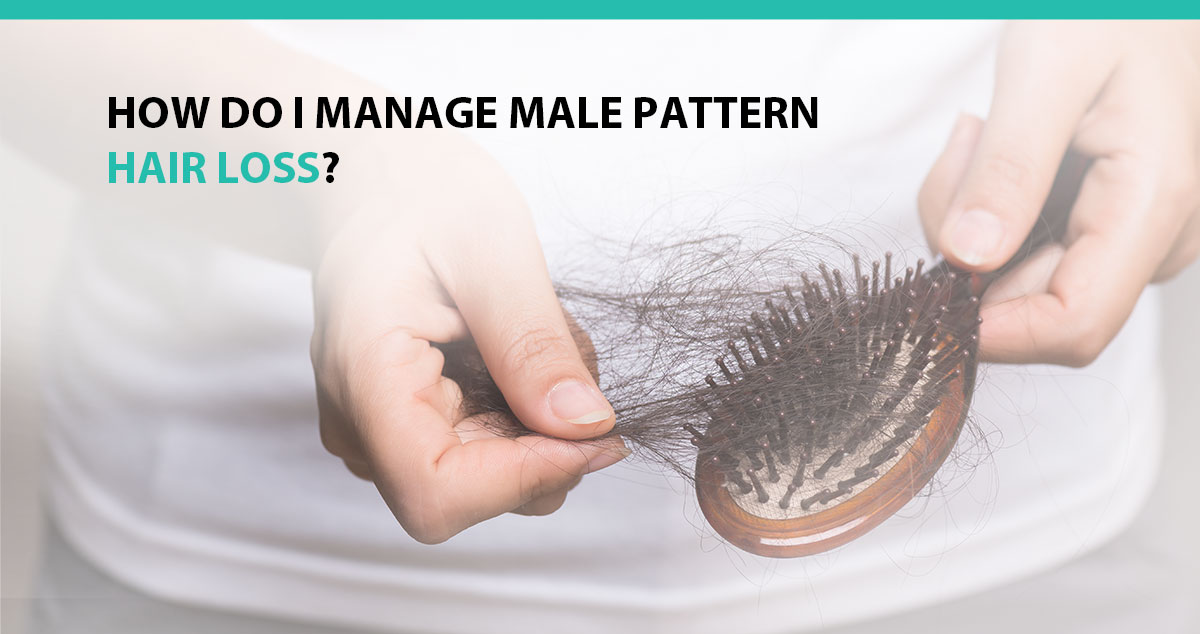
Over half of men will suffer from Male Pattern Hair Loss, or Male Pattern Hair Loss, by the age of 50. That’s a lot of people, so you might be wondering what is being done to prevent it from happening? A lot, actually! You can check out our previous blogs, part 1 and part 2, to see some examples of research being done to prevent Male Pattern Hair Loss.
However, it’s a much more complicated matter than it might seem to be at first glance, as it involves genes, cellular life spans, and so on, so we are still a long way from a permanent preventative measure.
In the meantime, though, there are some things you can do to make sure that your hair is as healthy as possible and possibly help slow or prevent the effects of hair loss – even if only temporarily!
Try A New Hairstyle!
This is the least invasive suggestion, and it isn’t going to work for everyone. But it should be considered alongside some of the other suggestions below as a serious way to mitigate concerns over the appearance of Male Pattern Hair Loss.
Especially in the early stages of Male Pattern Hair Loss, hair restoration surgery like Follicular Unit Excision (FUE) or Follicular Unit Transplantation (FUT) might not be the best option at that time.
The other upside of this is that you can get it done by your stylist – or visit a new one! – for relatively low cost. A good stylist will probably be able to help you begin or develop a hair care routine that will ensure your scalp, hair follicles, and current hair remain as full and looking great as possible.
Medicinal Treatments Like Minoxadil And Finasteride
Products like Minoxadil (Rogain) and Finasteride have been in use to slow hair loss for decades, and they have some effectiveness in slowing and/or stopping hair loss. But these treatments are always temporary and require consistent use to remain even a little effective.
Not only that, but these treatments don’t always work for every person, and both of them, Finasteride in particular, have a history of side effects that might cause damage to your scalp, hair follicles, and hinder or delay other treatment options.
It’s important to visit a hair restoration specialist before committing to a treatment option like this, so make sure you find someone you can trust. Dr. Joseph Williams in Las Vegas is renowned for his belief that treating hair loss requires treating the whole patient, and is a good place to start.
Wash, Oil, and Condition Your Hair And Scalp
Finally, the most important thing you can do to maintain your hair as long as possible is to treat it with care. Men in particular have a tendency to either over-wash, under-condition, or simply not take care of their hair at all, and that can lead to earlier and more severe hair loss.
Talk to your hair stylist and find what will work best for your scalp and hair. If your hair loss starts presenting, you can also schedule a consultation with a hair restoration expert to find out what kinds of options are best for you at that point in your hair loss.
Having the right products for your hair is an easy, affordable way to make sure your natural hair, follicles, and scalp remain healthy and full for as long as possible.
Hair Restoration Surgery
Ultimately, all of these other solutions are only temporary and provide some preventative measures or slow down the progression of Male Pattern Hair Loss. Fortunately, surgical procedures like Follicular Unit Excision (FUE) and Follicular Unit Transplantation (FUT) are extremely effective and produce natural results with minimal scarring and little to no downtime from your daily life.
Ideally, you should schedule your consultation with a hair restoration specialist as early as you suspect you might be suffering from Male Pattern Hair Loss. Having a long-term plan in place will allow you and your specialist to create the most effective and personalized plan for you.










